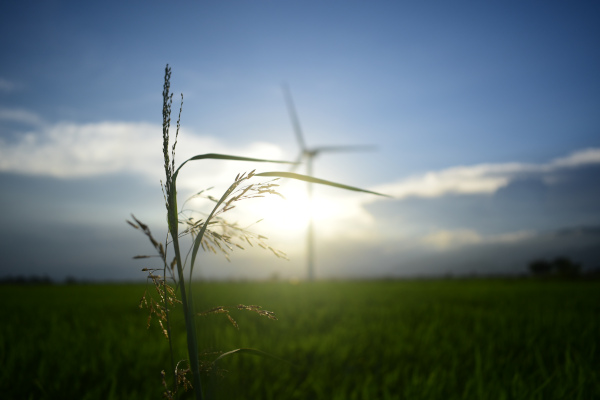Our business activities are related to large climate emissions from production of solar panels and transformers. We report on our total direct and indirect emissions resulting from our projects. In 2022 we set targets following the Science-Based Targets initiative’s (SBTi) Net Zero framework, which were approved by the SBTi in January 2023. Our targets are to minimise direct emissions by 2030 and achieve net zero emissions across our value chain by 2040
|
Near-Term Targets
Reductions by 2030 from 2019
|
- reduce absolute scope 1 GHG emissions by 95%
- source 100% renewable electricity annually (scope 2)
- reduce scope 3 GHG emissions 55% per kWh
|
|
Long-Term Targets
Reductions by 2040 from 2019
|
- maintain at least 99% absolute scope 1 and 2 GHG emissions reductions
- reduce scope 3 GHG emissions 97% per kWh
|
Scatec operates projects with an estimated useful life of 30-40 years. We are increasingly impacted by climate change. Therefore, taking a long-term view on risks, including climate risks, is essential. The processes of climate-related financial impact analysis, scenario analysis and climate reporting help ensure transparency, continuous improvement and enhances our understanding of how climate-related issues can affect us, how we can adapt and how we can mitigate further changes to the climate.
The highest-level of responsibility for managing climate related risks sits with the Board of Directors. The Board and the ESG Committee, which includes Board members and the Chairman, regularly review sustainability issues and climate change. The CEO and the EVP Sustainability, HSSE & Quality are responsible for assessing and managing risks. The Board assesses climate-related risks and opportunities as part of the annual review of the Decision Gate framework and Operating System processes and procedures. The management team reports monthly to the Board of Directors.
Our process of identifying and assessing climate-related risks are integrated into our multi-disciplinary company-wide risk management process. We have extensive policies and procedures in place as part of our operating system to actively manage risks related to the various parts of the Company’s operations. We reviewed climate risks and opportunities for our portfolio in 2022 aligned with the Task Force on Climate related Financial Disclosures (TCFD) recommendations and the EU Taxonomy technical screening.
In 2022, we updated our corporate level climate risk assessment to identify key climate risks and opportunities across our portfolio. Climate risks are assessed during the project planning phase as part of other risk assessments e.g. ESIA, wildfire and hydrology and flooding assessments.
To assess transitional opportunities, we use tools such as Bloomberg New Energy Finance’s New Energy Outlook (BNEF NEO) to inform our strategy and business decisions. New markets are opening due to climate-related financing such as subsidies and partnerships with regional development banks to increase access to energy. Additional opportunities are related to using renewable energy for specific purposes such as adaption to climate change, e.g. reverse osmosis, and decarbonisation of fertiliser and fuel production which Scatec refers to generally as Power to X. Scatec is well-positioned to exploit these opportunities through our experience with public-private partnerships and innovative finance solutions in collaboration with partners like the World Bank, the IFC, regional development banks, export credit agencies and Norfund.
Our physical climate risk exposure of our own operated power plants is assessed with climate scenario data from the World Bank Climate Change Knowledge Portal. We combine the extreme heat exposure and extreme rainfall risk scenarios and time frames, with our existing natural catastrophe risk database to increase understanding of related risks across our project portfolio. Hydropower project risk was assessed by a third party during 2022. We have extensive policies and procedures in place as part of our operating system to actively manage climate risks related to the various parts of the Company’s operations in addition to project specific mitigation measures.
By providing clean electricity, our renewable energy plants significantly contribute to reducing greenhouse gas emissions in every country where we operate. We take advantage of the emission reductions resulting from our plants in operation and our projects continue to be registered with the United Nations Framework Convention on Climate Change (UNFCCC) for verification and certification of electricity generation. One of our 2022 targets was for annual GHG emissions avoided by our projects under operational control to reach 2.1 mill tons by year end. Our plants reached 2.0 mill tons avoided by year end.




